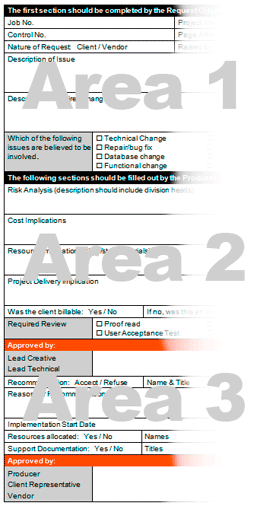It is important, or rather necessary, to detail any changes that you or your company make on the request of a client and you must keep a proper record of all changes implemented during a project’s lifecycle. More often than not it will be the duty of the Producer/Project Manger to ensure the implementation and documentation but everyone is responsible to communicate those changes.
Technically, the purpose of these procedures is to ensure that any change that is requested and or implemented is fully assessed in terms of its impact, both time and money and to ensure that when implemented it has received the appropriate sign off from the client. But realistically good change management has to do more with proper communication so that neither you, your company nor your client are at odds sometime during a project’s lifetime.
Each company will have its own comprehensive internal procedure for handling change management and therefore I will not endeavor to replicate one here. It suffices to say that different projects require different teams with different expertise. But for those of you new to this idea I do have one piece of advice: you need to create a change management document. Fortunately it is a fairly standardized signoff sheet and in my following example can be produced on a single page containing three major areas.
- The first being the request originators portion that should contain the name of the project, the date of the change request, the priority of the request, the area of the project affected and the group that is requesting the change. You will also need a description of the issue and the desired or best method to fix it. And may even want to include categories of change for easy reference such as, ‘technical’, ‘strategic’, ‘structural’, ‘graphic’, ‘functional’, or ‘database’, there are others as well.
- The second portion of this document would contain the Project Managers information such as the risk analysis of the change, the cost, resource and delivery implications of the change and if the client is billable or not.
- The last area of this document is used for signoffs of all party heads involved with the change, perhaps it may even contain a recommendation area as to whether the change should be made or not and the reason behind such a decision. And of course your client must sign and date the form as well, after all your client is the reason you designed this business procedure in the first place.
Change management takes time to implement but it saves frustration due to miscommunication.

Comments
One response to “Change Management”
Great framework and suggestions for a template for change management. One of the problems I’ve always faced with these types of projects however, is that new priorities emerge during the engagement and it’s challenging to fit those in alongwith the current ones…though perhaps that fits under the topic “client management”